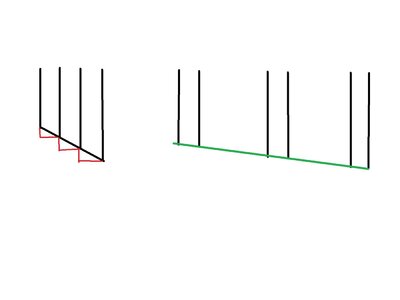You are using an out of date browser. It may not display this or other websites correctly.
You should upgrade or use an alternative browser.
You should upgrade or use an alternative browser.
Kurt Konrath
Kurt Konrath
That may be hard to do as the angle of fairing varies depending on change from frame to frame and distance between them.
For a Plank on Frame where you have almost solid frames it might be done. Some kits now give you templates on how to start fairing frames, but bulkheads are spaced widely apart and the change is great between them sometimes.
For a Plank on Frame where you have almost solid frames it might be done. Some kits now give you templates on how to start fairing frames, but bulkheads are spaced widely apart and the change is great between them sometimes.
I guess we are talking about Plank on Bukheads POB ?Instead of positioning frames in the false keel and fairing the shape for planking is their any advantage or disadvantage to clamping the frames together an fairing before final positioning?
I would not do it before, because the faired angle would be wrong
a fast skecth - hope the problem is understandable

Fairing the frames is the part of kit building that causes me the most problems.
I,m never sure that I have the correct hull shape after planking.
It would be nice if the kit manufacturer could supply a template for each frame or even an etched marking on the the frames. Especially at the bow and stern
How much would that add to the cost of the kit ..A few pennies or cents ? A couple of dollars or euros ?
I,m never sure that I have the correct hull shape after planking.
It would be nice if the kit manufacturer could supply a template for each frame or even an etched marking on the the frames. Especially at the bow and stern
How much would that add to the cost of the kit ..A few pennies or cents ? A couple of dollars or euros ?
Unfortunately fairing the bulkheads is just tedious work…sanding and filing and checking by laying down a plank to see how it fits over the faired bulkhead. You get a start with a plank that you lay across the bulkheads…note the angle…then start sanding and filing the bulkhead edge down to that angle. If you are adept using a Dremel sanding drum that will make faster work of beveling the bulkhead edges. Just do not get carried away and take off too much wood. Anyway…no easy solution…just patience and labor!
All ships have horizontal braces on the inside of the hold They run fore and aft the entire length of the ship. Same with a model. Get the frames lined up nice and straight and install the inside horizontal braces first. Two are usually enough but three might be better on bigger models. Glue the darned things on tight so the frames won't move as you sand away horizontally. Once the glue is good and dry and no frames are loose you can start sanding with an oblong block that covers two or three frames at least. Go slow and lightly so you don't over do it until you have the fairing line nice and even. Thicker frames will take more sanding but if the fairing isn't right then the planking won't look right either. Check the fairing by attaching a piece of ribbon or fat string to the side from stem to stern. If any high points stick out as you eyeball the ribbon you need more sanding there. The fairing line is an imaginary line that shows the curve of the hull to be nice and even, or crooked where more sanding is required. Be very careful on any concave curves at the bow and stern. Plank on bulkhead framing is the same except the bracings have to be cut and placed individually between the bulkheads to keep them from moving. Every plank should touch every frame or bulkhead and be of a smooth curve. After the planking is installed and sanded any low spots can be filled and sanded with Spakling compound or any such paste. Don't fill shallow depressions with glue. It doesn't sand well at all.
My current method is that the frames that require a bevel I mark the shape at the rear with a marker .Unfortunately fairing the bulkheads is just tedious work…sanding and filing and checking by laying down a plank to see how it fits over the faired bulkhead. You get a start with a plank that you lay across the bulkheads…note the angle…then start sanding and filing the bulkhead edge down to that angle. If you are adept using a Dremel sanding drum that will make faster work of beveling the bulkhead edges. Just do not get carried away and take off too much wood. Anyway…no easy solution…just patience and labor!
I then file to the marker of the frame forward without removing any of the ink on the frames then repeat
It gets me close to what I think is the right shape but I,m never sure if its correct
Hallo @JIMBO1912My current method is that the frames that require a bevel I mark the shape at the rear with a marker .
I then file to the marker of the frame forward without removing any of the ink on the frames then repeat
It gets me close to what I think is the right shape but I,m never sure if its correct
we wish you all the BEST and a HAPPY BIRTHDAY






